The Texas Electric Grid Failure Was a Warm-up
One year after the deadly blackout, officials have done little to prevent the next one—which could be far worse.
Anthony Mecke had drifted to sleep in the break room when a loud knock roused him at 1:23 a.m. “We just got the call,” a coworker said.
Mecke, a moonfaced 45-year-old, is the manager of systems operation training at CPS Energy, the city-owned electricity provider that serves San Antonio. He started at the company not long after high school, working at one point as a cable splicer, a job he performed in hot tunnels beneath the sidewalks of San Antonio. He thought he’d seen it all. But when he hustled from the break room, where he’d sneaked in a power nap after an all-day shift, into the company’s cavernous control room, housed in a tornado-proof building on the city’s East Side, what he witnessed unsettled him.
This was Monday, February 15, 2021. A winter storm had brought unusually frigid temperatures to the entire middle swath of the United States, from the Canadian border to the Rio Grande. In San Antonio, it dropped to 9 degrees. In Fort Worth, the storm’s icy arrival a few days earlier had led to a 133-vehicle pileup that left 6 dead. Abilene and Pflugerville had advised residents to boil their water, the first of thousands of such warnings that would eventually affect 17 million Texans. Across the state, families hunkered down and did anything they could to stay warm. The overwhelming majority of Texas homes are outfitted with electric heaters that are the technological equivalent of a toaster oven. During the most severe cold fronts, residents crank up those inefficient units, and some even turn on and open electric ovens and use hair dryers.
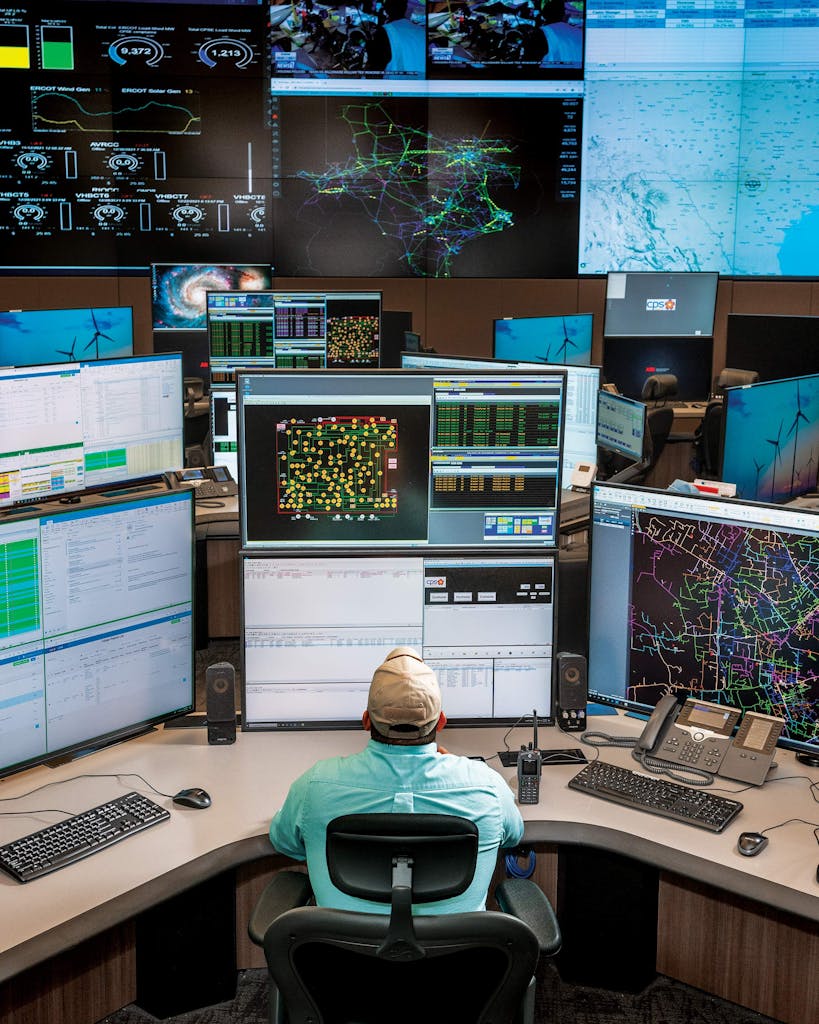
Mecke could track the spiking energy use in real time. One wall of the control room is covered in enormous computer monitors displaying maps and data. He scanned for one particular piece of information. The state’s electricity reserves, which are tapped to prevent emergencies, were already depleted. The problem wasn’t just surging demand. Power plants all across the grid were shutting off, incapacitated by frozen equipment and a dearth of natural gas, the primary source of fuel.
The Texas power grid was, at that moment, like an airplane low on fuel that needed to jettison cargo to stay aloft. That’s what the call had been about. The state’s grid operator, the Electric Reliability Council of Texas, or ERCOT, had just told CPS Energy and fifteen of the state’s other electric utility companies to immediately begin turning off power for portions of their service areas. The result would be blackouts.
Nobody yet knew just how widespread the blackouts would become—that they would spread across almost the entire state, leave an unprecedented 11 million Texans freezing in the dark for as long as three days, and result in as many as seven hundred deaths. But neither could the governor, legislators, and regulators who are supposed to oversee the state’s electric grid claim to be surprised. They had been warned repeatedly, by experts and by previous calamities—including a major blackout in 2011—that the grid was uniquely vulnerable to cold weather.
Unlike most other states that safely endured the February 2021 storm, Texas had stubbornly declined to require winterization of its power plants and, just as critically, its natural gas facilities. In large part, that’s because the state’s politicians and the regulators they appoint are often captive to the oil and gas industry, which lavishes them with millions of dollars a year in campaign contributions. During the February freeze, the gas industry failed to deliver critically needed fuel, and while Texans of all stripes suffered, the gas industry scored windfall profits of about $11 billion—creating debts that residents and businesses will pay for at least the next decade.
Since last February, the state has appointed new regulators and tweaked some of its statutes. But despite the misery, death, economic disruption, and embarrassment that Texas suffered, little has changed. The state remains susceptible to the threat that another winter storm could inflict blackouts as bad as—or even worse than—last year’s catastrophe. Despite promises from public officials to rectify these problems, we remain largely defenseless and can only hope we aren’t thrashed by another Arctic blast. Even as forecasters predict a relatively warm winter on average, there is compelling evidence that such extreme weather phenomena are becoming more common. To understand the danger, it’s worth examining how close the Texas grid came last year to a meltdown that could have left much of the state without power for several weeks, or even months.

Two days before Mecke was awakened in his office, ERCOT had held an emergency conference call to warn the state’s utilities and rural electric cooperatives that blackouts were likely. ERCOT officials said the grid might have to shed as much as 7,500 megawatts—effectively darkening roughly one of every eight homes in the state. That’s nearly twice as much as the last controlled load shed, in 2011, when rolling blackouts had lasted as long as eight hours, which in turn was four times longer than the previous large-scale blackout, in 2006.
The worst-case scenario ERCOT had gamed out, what it called “extreme winter,” contemplated a record-setting demand of 67.2 gigawatts. Electricity consumption blew past that mark at 7 p.m. on February 14. Meanwhile, electricity supply continued to dwindle as underinsulated power plants went down, one after another.
For the grid to function properly, the supply of electricity must always match demand; this equilibrium is reflected in the grid’s frequency, which usually remains steady at 60 hertz. Power plants across the state are tuned in to the frequency, and they automatically increase or decrease generation to maintain equilibrium. The grid is like a giant synchronized machine, its components linked across hundreds of miles, from Midland to Houston, from Amarillo to Brownsville. On this night, as demand drastically outpaced supply, the frequency dropped and the vast machine began churning faster. But eventually it couldn’t compensate on its own.
By 1:23 a.m., ERCOT could no longer delay action. An operator in its control room picked up the hotline phone, which was wired to sixteen of the state’s utility companies, and ordered a thousand-megawatt load shed statewide. “You practice for this for years,” Mecke said. “You hope it never happens.”
In fact, a few hours earlier, he’d run his coworkers through a simulation of a nearly identical load shed. When the time came to carry out the operation for real, there were no hiccups. “It was surprisingly calm,” he said. “It was smooth.” Within seconds, electricity in parts of San Antonio began to blink off. Mecke, hopeful that the grid would stabilize, breathed a sigh of relief. The calm was short-lived.
The frequency should have risen after the load shed, but instead it kept falling. It was “nerve-racking,” said Mecke.
At 1:47 a.m., the hotline phone rang again. Everyone in the CPS control center stopped what they were doing. ERCOT needed another thousand megawatts cut. Because of coronavirus precautions, CPS executives weren’t in the control room. Rudy Garza, the chief customer officer, tracked the frequency’s dangerous decline on his phone, texting back and forth with industry friends and former coworkers from across the state. “We were scared,” he said.
CenterPoint Energy, a utility in Houston, runs a control room similar to that of CPS. Eric Easton, CenterPoint’s vice president of real-time operations, was hastening to execute the second round of blackouts when the hotline phone rang for the third time, at 1:51 a.m. ERCOT ordered another three thousand megawatts—more than the first two combined. “Calls started coming in so fast that they were overlapping,” said Easton. “When are we going to stop shedding load?” he wondered.
But the situation was only growing more dire. At the precise time of the third call, the frequency reached a critical threshold: 59.4 hertz. The Texas grid, which has been around in some form since World War II, had only once in its history fallen this low. Automated turbines across the state began spinning even faster to produce more electricity, but when the frequency dips below 59.4 hertz, the turbines reach speeds and pressures that can cause catastrophic damage to them, requiring that they be repaired or replaced. This scenario was unlikely because, to prevent it, the grid automatically triggers a nine-minute countdown when it strikes 59.4 hertz. If the frequency did not rise in time, power plants would shut down and the grid would begin turning itself off completely. This would leave all 26 million Texans who relied on the ERCOT grid without power for weeks or months.
A few more minutes ticked by. The frequency kept falling, touching 59.302 hertz, yet another alarming precipice. At 59.3 hertz, human operators are taken out of the equation: they are too slow to make the urgent adjustments that are needed to stabilize the grid. The system is programmed to automatically start blacking out as many areas as are necessary to balance power supply and demand. But in this scenario, that fail-safe may not have worked because so many areas had already been manually cut off. “We were on the very edge,” said Easton.
In a last-ditch effort to prevent the grid’s collapse, ERCOT placed a fourth hotline call, at 1:55 a.m., and ordered another 3,500 megawatts. All across Texas, grid operators were moving as quickly as they could, blacking out more and more neighborhoods, but they were running out of options. As the countdown approached zero, the frequency suddenly shot back up. The immediate crisis was over—the last-second load shed had worked—but for most of the following day, the grid remained dangerously unstable.
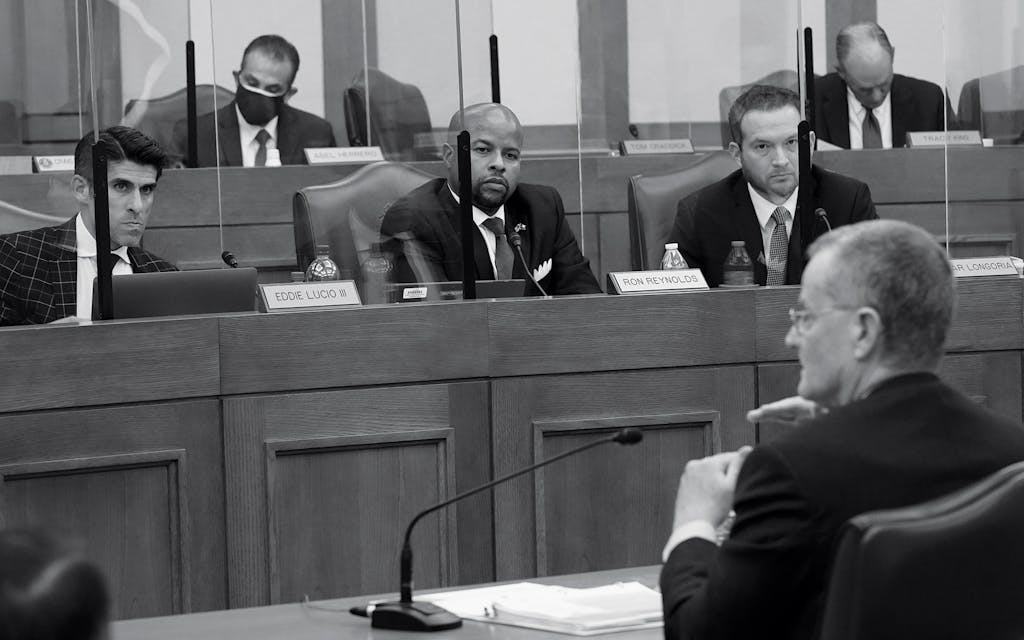
It is hard to fathom the devastation a total shutdown would have wreaked. Bill Magness, then the CEO of ERCOT, would explain as much to the Texas Senate ten days later. Magness is a lawyer with a buzz cut and ramrod-straight posture who spent time in the nineties and aughts as a practicing Buddhist. “What my team and the folks at the utilities in Texas would be doing is an exercise called ‘black start,’ ” he said. A black start would have required carefully rebooting a few power plants at a time and using them to jump-start others, thereby restoring the grid piece by piece. It’s not a matter of flipping switches. The steps required for a black start are numerous, complex, and delicate. No one knows how long that process would take, because no one has ever needed to do it. Magness said it would have been weeks at least.
Most of the state’s residents would have been without heat, potable water, or light, as would almost all of the businesses on which they depend. Traffic lights wouldn’t have worked. Caravans of trucks, likely escorted by the National Guard, would have delivered fuel to generators to keep hospitals (many of which were nearly at max capacity because of COVID-19), fire departments, and other emergency services operating. When the freeze lifted and the roads thawed, many would have attempted an exodus into neighboring states—all of which, with a few brief exceptions, kept power—but even that would have proved difficult because gas pumps run on electricity. Magness looked grimly around the Senate chamber as he described the doomsday scenario. “Imagine: the suffering that we saw [would have been] compounded.”
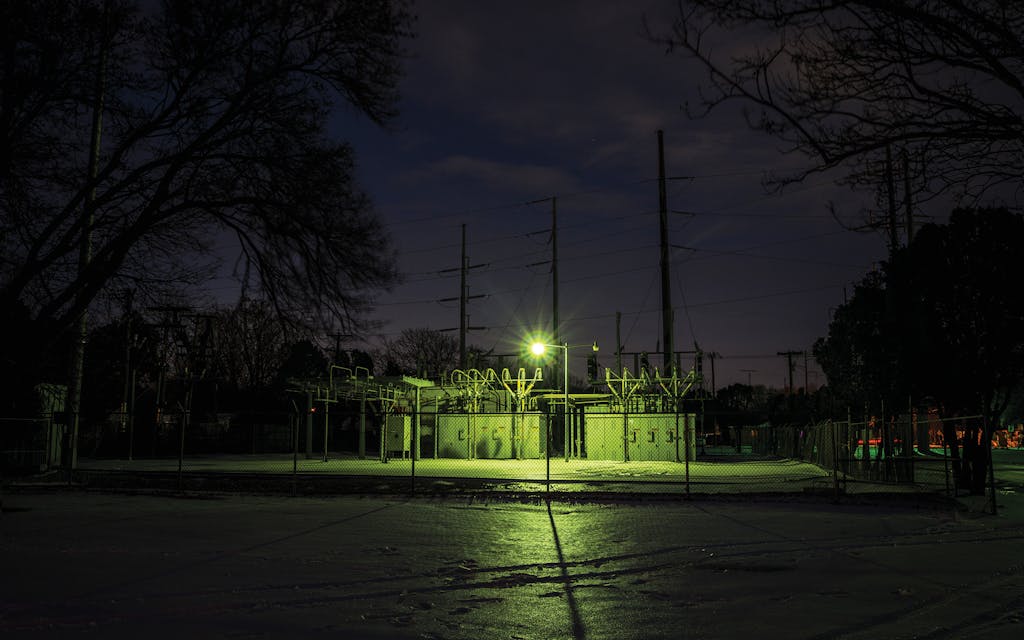
In her ground-floor apartment on Uvalde Road, a busy commercial thoroughfare in the Cloverleaf community, just east of Houston, Mary Gee liked to sit by the window, watching the people and cars passing by. Across the way were an auto-parts store, a car wash, and a Tex-Mex restaurant. There was always something happening. But the snow and ice in February brought Uvalde to a standstill.
The neighborhood lost power early Monday morning, February 15. After the sun rose, a few neighbors ventured out. Word passed in Gee’s complex, the Havenwood, that a nearby Burger King was open—that would have meant not only food but warmth. Some decided to check it out. This wasn’t an option for Gee. She was relatively healthy, but at 84, walking more than a mile on slippery sidewalks was out of the question.
“It kind of felt like the end of the world,” said Christion Jones, who lived a few doors down from Gee. Other residents sat in cars to warm up, their engines idling, the exhaust forming small clouds in the frigid air. But Gee had stopped driving years before and had given the last car she owned to a god-granddaughter.
Gee had grown up with eight brothers and sisters, and much of her childhood was spent in a rural house with a wood-burning heater in the small town of Normangee, between Houston and Waco. She had worked as a nurse for more than twenty years at Houston Methodist hospital. On weekends, she and her husband, Herman, had kept a shed at a local flea market selling clothes, LPs, purses, electronics—a little bit of everything. Gee liked to chat up the regulars.
Herman died in 2018, and she tragically lost her only child, Michael, the next year. But Gee wasn’t alone. Most of her siblings had moved to Bryan and Houston, which meant she was surrounded by nieces and nephews. She often spoke with them on the phone, calls that would stretch at least half an hour as Gee asked about relatives one by one. If any were struggling, she would pray for them.
The day Gee lost power, her niece Zona Amerson tried to call her, but no one picked up. Amerson, who’s 64, was concerned, but there was no way to drive across town to check on her. The roads were impassable. Then one of Amerson’s pipes burst, with no plumbers available to fix it. She was distracted by her own crisis.
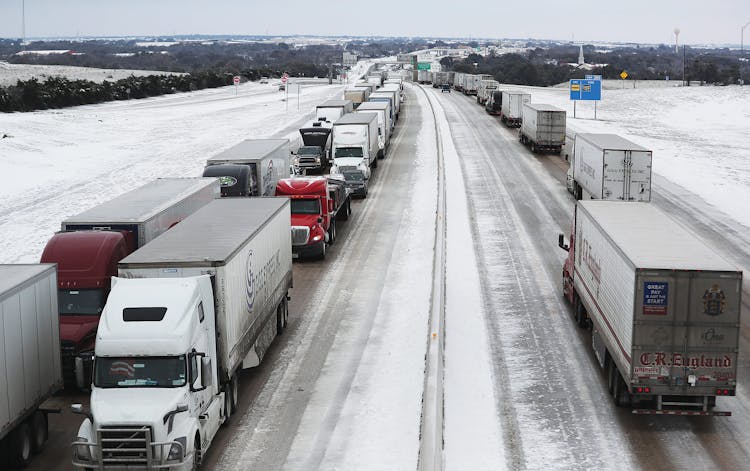

On Thursday, Amerson heard from a relative that her aunt had died. A Harris County medical examiner ruled that the cause was hypothermia. Gee was one of hundreds of Texans who died because of the lack of electricity. (The state recently updated the death toll to 246, a number that falls far short of the total that experts on mortality say is the true measure of the cost in lives of this disaster, which accounts for those who, for example, had a heart attack and couldn’t get to a hospital.) Others included a centenarian in a senior living community in Houston who’d also succumbed to hypothermia; she’d received a college degree in the thirties and had taught elementary school in a single-room schoolhouse in Wisconsin. An 87-year-old Austin woman died of a fast-moving urinary tract infection after her catheter froze. Two men in Garland are believed to have died of carbon monoxide poisoning—neighbors said they were running a gas-powered generator inside an apartment unit. In Sugar Land, southwest of Houston, a family used their fireplace to stay warm. The house caught fire, and a grandmother and three of her grandchildren died. The mother survived. “Most of all, I think, what I will miss is just seeing them grow into these amazing human beings that I knew that they would be,” she told the Houston Chronicle.
Of the millions of Texans who lost electricity during the blackouts, which lasted from Monday through Thursday, most experienced it as a week of compounding problems. Millions either lost water or needed to boil water. When the water finally came back on, burst pipes began to flow, causing billions of dollars in damage. Plumbers were so overwhelmed with calls that some homeowners had to wait months for repairs. Economists at the Dallas Federal Reserve estimated that the blackouts cost the state’s economy somewhere in the $80 to $130 billion range, potentially making it the most expensive disaster in state history.
Of the millions of Texans who lost electricity during the blackouts, most experienced it as a week of compounding problems.
Even Texas newcomer Elon Musk, the chief executive of Tesla and the world’s richest person, was affected. “I was actually in Austin for that snowstorm in a house with no electric, no lights, no power, no heating, no internet—couldn’t actually even get to a food store,” he said at an investor meeting in October.
Dan Meador, an engineering manager at Austin tech firm Anaconda, also lost power. He and his pregnant wife bedded down in their living room in front of their fireplace. When they woke in the morning, it was 7 degrees outside with a windchill factor of −8. He used the fire to boil cowboy coffee and cook sausages in a cast-iron pan. The following days were devoted solely to meeting basic needs: finding firewood and preparing meals. When a neighbor’s cedar tree splintered and fell under the weight of ice, he fetched his chain saw—before remembering it was electric. Meador, a former linebacker for the University of Arkansas football team, used a hacksaw instead. When I spoke to him eight months later, he was still shaken by the experience. “You turn your water faucet on, water comes out,” he said. “There’s a lot of faith that we have in this stuff just showing up.”

The Texas Legislature was still in the early stages of its biennial gathering in Austin when the blackouts occurred. Lawmakers and staff were told to stay off the icy roads. This appears to be the first time in state history that winter weather forced legislators to stay home.
Of course, that didn’t stop politicians from pointing fingers. Rick Perry, former governor and former U.S. secretary of energy, tried to preempt calls to increase federal oversight of the state’s grid. In a striking display of insensitivity to the families who were grieving the loss of loved ones, he claimed that Texans were willing to forgo power “for longer than three days to keep the federal government out of their business.” Lieutenant Governor Dan Patrick was one of many politicians to blame wind turbines. “Our renewables aren’t reliable,” he said on Good Morning America. Governor Greg Abbott appeared on Sean Hannity’s Fox News show and argued that the blackouts showed how the Green New Deal, which was then a subject of intense debate in Washington, D.C., would be a “deadly deal for the United States.”
Blaming renewables was, of course, a politically convenient lie. Yes, some wind farms in West and South Texas had frozen up—their operators hadn’t invested in blades with internal warming coils that allow windmills to function perfectly fine in other states and regions, including north of the Arctic Circle in Norway. But many windmills kept working, helping to prevent a worse disaster. Even Abbott admitted, while the blackouts were ongoing, that the biggest culprit was power plants that ran on gas.
As the death toll climbed, the politicians’ bluster ebbed. Abbott added a new item to the legislative session: winterizing the state’s power system. Patrick promised, “We’re going to get to the bottom of this and find out what the hell happened, and we’re going to fix it.”
Such promises had been made before. A decade earlier, in February 2011, temperatures in Texas plunged into the single digits, and ERCOT instituted rolling blackouts that affected 3.4 million homes and businesses (but for only a matter of hours, rather than days). David Dewhurst, a Republican who was then the lieutenant governor, blamed a lack of “winterization and preparation.” Weeks later, the Legislature held a hearing on the blackouts, and Troy Fraser, a Republican state senator representing the Twenty-fourth District, demanded, “How are we going to make sure that doesn’t happen again?”
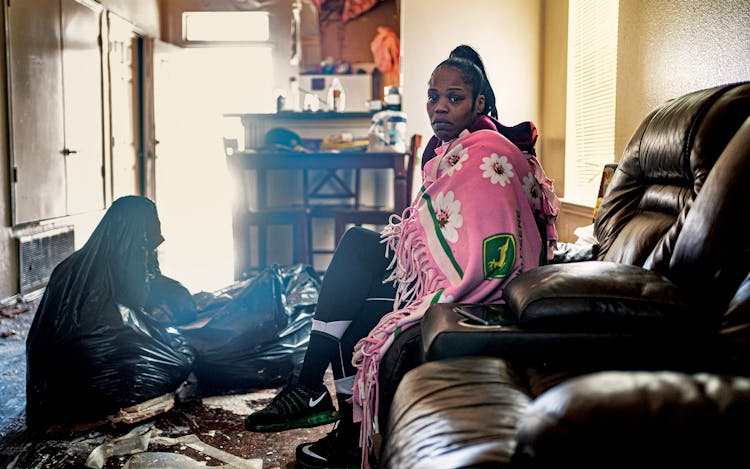

The answer came in the form of a bill introduced by Senator Glenn Hegar, a Republican from Katy. It required the Public Utility Commission, which oversees ERCOT and the state’s electricity utilities, to review power plants’ weatherization plans. If any plan was deemed insufficient, the PUC could request more detail, but it had no enforcement authority. (The bill didn’t mention the need to winterize natural gas pipelines, an omission that rendered the measure effectively meaningless, since those power plants, even if fully operational, can’t produce electricity without a steady supply of gas.) Craig Estes, a Republican senator from Wichita Falls, tried to put some teeth on the bill with a substitute that required power plants to comply with the state’s findings. But a few days later, Hegar’s original bill was back, with Estes’s changes stripped out. Hegar, who later left the Senate and was elected state comptroller in 2014, ensured the PUC was little more than a glorified paper collector.
DeAnn Walker reiterated as much when, on February 25 of last year, the Senate business and commerce committee held a fourteen-hour hearing to determine what had happened this time around. Walker, the chair of the PUC, testified that her agency’s job was simply to gather and warehouse the plans. “I don’t believe we, as the PUC, have authority to require weatherization,” she said.
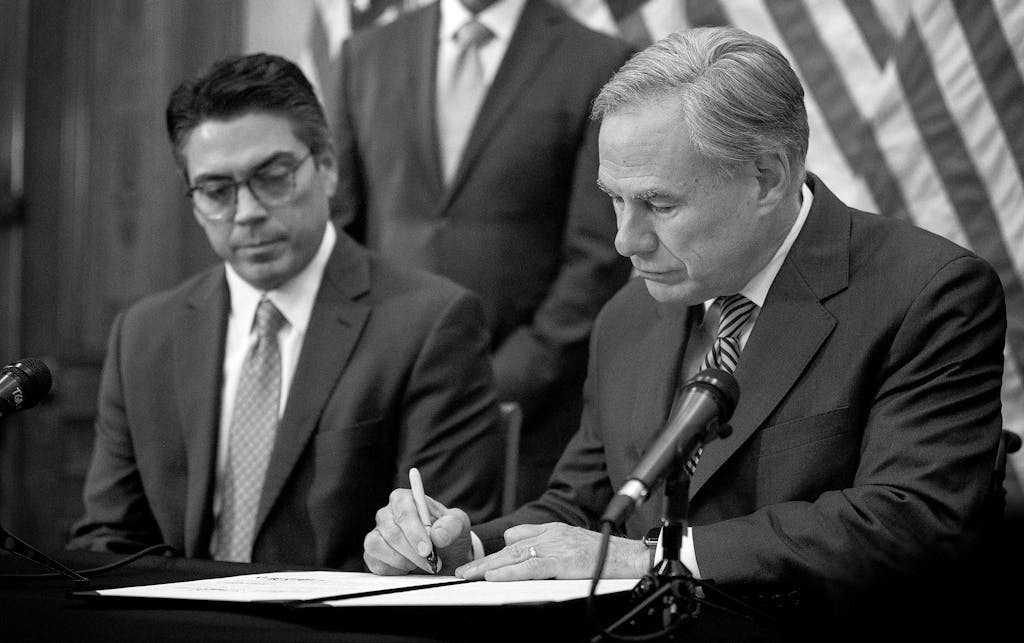
For many of the lawmakers, the lengthy hearing was a crash course in the labyrinthine mechanics and bureaucracy of the state’s grid. The federal government regulates all of the country’s regional grids except for ERCOT, which operates wholly inside Texas. (When regional grids experience blackouts, they are able to import power from neighboring grids; because the Texas grid is an island unto itself, with only a few small connections to Mexico and other states, importing large amounts of power isn’t an option.) The ERCOT grid covers almost all of Texas, though El Paso and parts of East Texas are plugged into other regional grids. ERCOT is overseen by the PUC, whose three commissioners are appointed by the governor. Since the 2011 freeze and blackouts, all the agency’s commissioners have been picked by Abbott and Perry. (The PUC was later expanded to include five commissioners.)
A separate body, the Railroad Commission of Texas, regulates the state’s oil and gas industry—or at least it’s supposed to. In practice, it seldom does. Its three commissioners are elected, and their campaign coffers are filled by oil and gas industry executives. Following the 2021 blackout, the commissioners expressed little interest in learning why the February storm caused statewide outages only in Texas, not in neighboring states and states far to the north. They instead aggressively defended the industry they’re supposed to regulate, arguing publicly that the state’s failure to require winterization of natural gas providers played no role in the disaster. At the February committee hearing, Christi Craddick, then the Railroad Commission chair, tried to pin the blame on electric power producers, claiming that the gas industry was hamstrung by lack of electricity, not the other way around. “The oil field simply cannot run without power,” she testified.
“Yes, it can happen again.” That’s what Curt Morgan, chief executive of the power company Vistra, told me.
That claim, however, doesn’t withstand scrutiny. Craddick was well aware of problems with the gas supply before the blackouts began, something I discovered while reviewing records of dozens of phone calls, emails, and texts among those responsible for keeping the lights on. Five days before the blackouts began, Walker, the PUC chair, received an unwelcome call from an executive at Vistra, an Irving-based company that is the largest power producer in ERCOT. The executive warned that the company would be unable to meet the rising demand for electricity because it would soon face natural gas shortfalls at several of its plants. Texas normally produces about 29 billion cubic feet of gas a day. By February 11, when temperatures hit 22 degrees in Midland, about 915 million cubic feet were already offline, according to a federal report on the blackout. (Six days later, around the peak of the blackouts, 3.7 billion cubic feet were offline. All but 591 million of that was caused by the failure of gas infrastructure.)
That morning, Walker called Craddick. “We are going to have gas problems at our gas plants,” Walker said. The next day, the Railroad Commission issued an emergency order intended to help power plants get access to gas, but the order added to the growing confusion. There was only so much natural gas to go around, and the Railroad Commission wasn’t sure exactly who should get it. On February 13, two days before the blackouts began, 22 gas processing plants had been disrupted by cold weather conditions. Not a single one was disrupted by loss of electric power.
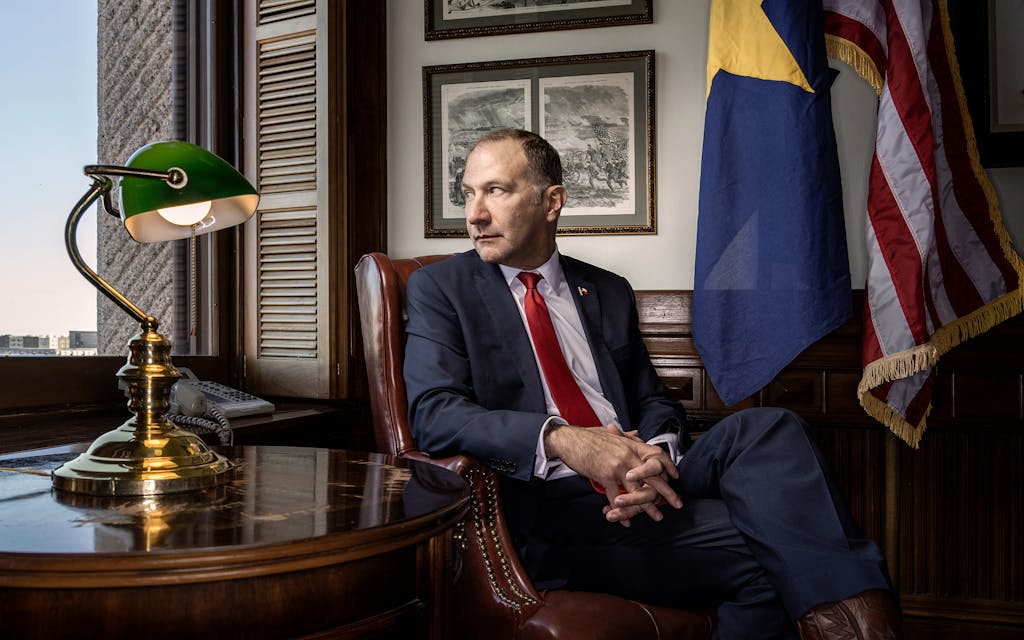
State senator Charles Schwertner, an orthopedic surgeon from Georgetown and a conservative Republican, knew little about the grid when his home’s power went out that week. But he was a quick study. A few weeks after the initial February hearing, Lieutenant Governor Patrick asked him to carry the main bill to fix the grid. Schwertner later told me he concluded right away that the PUC commissioners were “derelict” in their oversight duties.
I met him in his Capitol office, which is adorned with prints of the Battle of Gettysburg and the Confederate attack on Fort Sumter. He was proud of the bill he wrote. It created a government body to ensure coordination between the gas and power industries. (As reliant as these industries are upon each other, no such formal body had existed before.) The bill directed the PUC and the Railroad Commission to levy a $1 million fine each day on power plants, pipelines, and natural gas facilities that failed to winterize, and it allocated an initial $21 million to the Railroad Commission to hire about a hundred inspectors to verify that the gas industry was preparing for cold weather.
When Schwertner sent his bill to the House, the legislation also created a committee to map the gas-electric supply chain and determine which gas facilities were critical to the operation of power plants. It authorized the Railroad Commission to use its hundred new employees to inspect and, if necessary, fine gas companies. When the bill returned from the House, though, the language had been revised: only companies “prepared to operate during a weather emergency” were considered critical. This created a troubling loophole. Once the bill had passed, the Railroad Commission was responsible for implementing it, and the agency proposed a rule allowing gas companies to exempt themselves from winterizing simply by paying a $150 filing fee and claiming that a facility wasn’t prepared to stay operational—a dizzying bit of circular reasoning.
Schwertner told me that requiring winterization for one part of the grid (the electric power providers) but not another (those who provide gas to the electricity providers) reflected the political power of the gas industry. “There was some pushback by industry,” he said, citing natural gas producers and pipeline operators. He said he didn’t like the House changes, especially the weakening of “weatherization requirements of natural gas.” Some of his colleagues were less diplomatic.
During a Senate committee hearing in September, Lois Kolkhorst, a Republican senator from Brenham, reamed out Railroad Commission executive director Wei Wang for not effectively implementing the law. Kolkhorst called the $150 opt-out fee “disturbing.” At the same hearing, Senator John Whitmire, a Houston Democrat, offered Wang a compliment of sorts. “You’ve unified this body—let me just thank you for that. You’ve brought the family together here . . . Your rule-making proposal sucks.” Schwertner wrapped up the conversation by demanding change.
The Railroad Commission didn’t budge, and it was roundly condemned. Then, in late November, it appeared to reverse course, at least rhetorically. It announced that most pipelines and gas processing plants, along with many wells, would be required to winterize. But thus far the commission has engaged in delay tactics. These rules won’t be finalized until sometime later this year—after the winter. Perhaps the rules will be potent enough to compel real change. But if past is prologue, the new rules are likely to be ineffectual—a repeat of what happened in 2011.

The week of the blackout produced staggering, hard-to-fathom energy bills Texans will be paying for years. That’s because the state’s electricity market broke sometime around midday on Monday, February 15. In the hours after the blackouts, ERCOT tried to shore up electricity reserves to stabilize the grid. The computer system that runs the market, though, interpreted this as an oversupply (in the middle of blackouts!) and dropped prices. When ERCOT and the PUC realized what was happening, officials decided to bypass the market and, on Monday evening, manually set prices at the maximum of $9,000 per megawatt hour. (By comparison, the average hourly price in 2020 was $25.73.) For fear that restarting the market and letting prices fluctuate in the midst of blackouts would lead to instability, officials kept prices at that artificially inflated level until Friday.
As a result, Texans spent an exorbitant amount on electricity during a week in which most of them couldn’t get much electricity. For the entirety of 2020, Texans paid $9.8 billion to keep the juice flowing. On February 16 alone, they spent roughly $10.3 billion. Costs for the month of February totaled more than $50 billion.
The bill for this pricing disaster is coming due. The Legislature approved the issuance of what will likely end up being about $5 to $6 billion in bonds to pay back some of these costs. That form of borrowing creates an obligation of about $200 for every adult and child in Texas.
Of the 2,500 participants in the ERCOT market—power plant owners, electricity marketers, electric cooperatives, creditors, and traders—many are privately held and don’t disclose their profits and losses. But some of the big shareholder-owned electricity generators were stuck with major losses because, while electricity prices were astronomical, natural gas prices were even higher.
As a result, anyone who had natural gas to sell came away a winner. Large Dallas-based pipeline owner Energy Transfer posted a net profit of $3.29 billion for the first three months of 2021; it had never posted even a $1 billion quarterly margin before. The company chalked up its profits to preparation—it had forked over the money to winterize parts of its facilities, so they remained up and running during the storm. Kinder Morgan made $1.41 billion, its best quarter ever. British oil giant BP, which supplies more gas in the U.S. than any other company, was coy. “It was a very exceptional quarter in gas trading,” CEO Bernard Looney told Bloomberg, which pointed to an estimate suggesting that the firm reaped $1 billion during that stretch. Gas producer Comstock Resources president Roland Burns put it much more plainly, saying it was “like hitting the jackpot.”
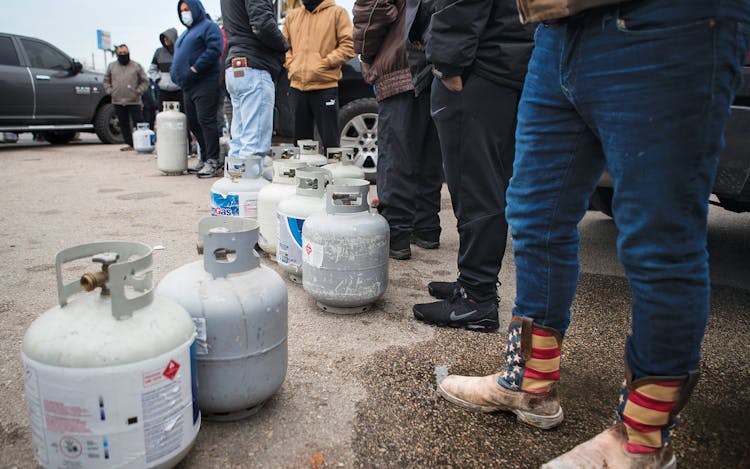
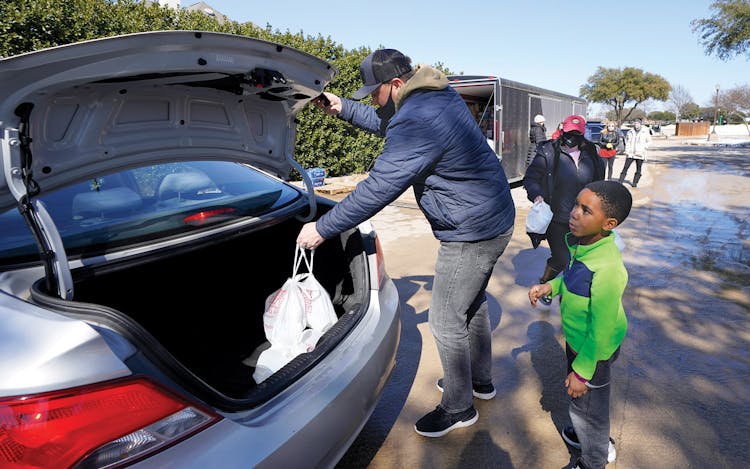
According to Bloomberg, about $8.1 billion was spent on gas burned to generate electricity during that week. Another $3.3 billion went for gas sold directly to homeowners, a figure that’s publicly available only because the Railroad Commission approved the issuance of bonds to compensate three gas utilities that paid exorbitant prices for fuel that week. These bonds will be paid off through extra charges on customers’ monthly bills, though it’s not yet clear for how long. Even more was spent by city-owned gas companies, many of which have tacked on additional charges to customers’ bills to pay off the enormous costs the companies ran up over a few days.
It’s possible that some of the massive profits made by gas companies were illicit. The Federal Energy Regulatory Commission is looking into potential market manipulation by Texas pipeline companies, which are subject to the least regulation and oversight of any pipelines in the country. Those companies operate in a regulatory penumbra. For their pipelines operating only in Texas, they’re generally exempt from reporting tariffs and other market information the federal government requires of interstate pipelines. This makes it difficult to determine whether gas prices were manipulated. In September, FERC chair Richard Glick told Congress, “We have found a number of anomalies.” FERC later disclosed that two cases of possible natural gas market manipulation were being investigated, though it wouldn’t identify the two companies involved. (Disclosure: Texas Monthly’s chairman is Randa Duncan Williams, who is also chairman of the general partner of Enterprise Products Partners, a major pipeline company whose gas pipelines are located entirely within Texas. Company executives say they’ve received no inquiries from FERC.)
At the same September hearing, Kansas senator Roger Marshall asked a panel of FERC commissioners, “Was there price gouging, and who made the money?” None of the four commissioners came up with an answer.
Most Texas politicians have shown little interest in even asking this question. The chief executive of every major power plant in Texas testified repeatedly before state lawmakers. But Kelcy Warren, the chair of Energy Transfer, never appeared. Warren then gave a $1 million campaign contribution to Abbott on June 23, shortly after the legislative session ended—a session in which Abbott, despite his initial calls to fix the grid, resisted muscular new regulation of the gas industry. (Oil and gas executives, employees, and political action committees contributed about $16.6 million of the $79 million that Abbott raised from 2017 through 2020, according to an analysis by Texans for Public Justice.)
For his part, Texas attorney general Ken Paxton, who’s awaiting trial on felony securities fraud charges, hasn’t announced that his office is investigating any energy price gouging. I recently asked PUC chair Peter Lake, whom Abbott appointed in the spring, after DeAnn Walker resigned, to assess who profited from the disaster. “I’m not sure anybody has a full picture of the complexity of all these financial transactions,” he said cautiously. It’s telling that Lake, who was supposedly brought in to fix ERCOT and the electricity market, dodged a question about who stood to gain and lose the most from maintaining the status quo.
Though it may be hard to believe today, Texas’s grid became a pioneer in the world of electricity generation and distribution two decades ago.
The most prominent Texan who appears to be itching for a confrontation with gas companies is Paula Gold-Williams, the longtime head of CPS Energy, the city-owned utility in San Antonio. Days after the crisis ended, two gas suppliers owned by Energy Transfer sent CPS an email asking for $317.5 million. “Due to the unprecedented weather event over the past 10 days, the price of natural gas rose dramatically,” the email said. It demanded that CPS pay cash or provide a letter of credit.
CPS refused to pay. Instead, it filed a lawsuit claiming price gouging. In its downtown San Antonio offices, Gold-Williams had watched electricity and gas prices carefully before and during the debacle. A native of San Antonio’s East Side, she trained as an accountant and worked as a regional controller for Time Warner and as a vice president at Luby’s before joining CPS, where she worked her way up to CEO. “We will pay every legitimate price and cost,” she promised, but not a dollar more. Working with her staff, she determined that about $40 per unit of gas was reasonable. Anything above that? The $500 price Energy Transfer had demanded? That was unconscionable. When I reached out to Energy Transfer about the financial tug-of-war, the company sent a statement saying CPS was responsible for the costs because it didn’t prepare for the storm. “CPS is trying to play politics and place blame on others,” the statement said.
But when I talked to Gold-Williams, she was resolute. “I am absolutely focused on getting to the bottom of this,” she said. In October, she announced her retirement, but she promised to stay engaged with the company—specifically to assist with the lawsuit.
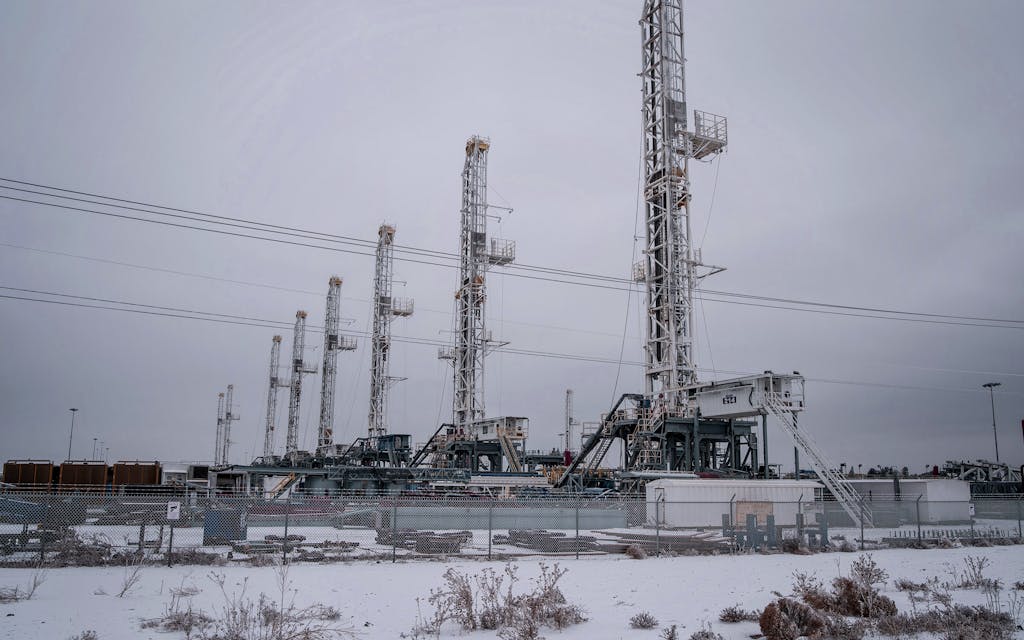
Yes, it can happen again.” That’s what Curt Morgan, chief executive of the power company Vistra, told me when I asked about the potential for another electricity crisis. Vistra lost about $2 billion during the storm, and it plans to spend more than $80 million by the end of this year to prepare its plants for the next Arctic blast.
In November, I visited one of those plants, in Odessa. During the February storm, ice had accumulated and clogged the air-intake system, so Vistra is investing $2.5 million to make sure that doesn’t happen again. From atop any of the plant’s four 10-story boilers, which produce the high-pressure steam that’s converted into electricity, you could look out toward the horizon and see a landscape dotted with pipelines, pump jacks, and flare stacks. The irony was stark: the plant sits in the heart of one of the world’s largest oil and gas fields, yet when blanketed by extreme temperatures, it couldn’t get the gas it needed to stay operational.
Though Vistra is ensuring its own plant will be able to sustain such conditions, the same can’t be said for its neighboring gas producers, which means its own investment may be futile. “I worry about the gas system,” Morgan told me. “The area that I’m most concerned about is the Railroad Commission oversight.” He’s not alone.
You might think that the natural gas industry, having scored a multibillion-dollar windfall at the expense of other Texans, might show some magnanimity in victory and agree to take steps to ensure against future blackouts. But you would be wrong. The gas industry continues to fight ferociously to avoid the kinds of regulations that are commonplace in other states. It has boosted by millions of dollars its campaign contributions to friendly politicians, including the three officials leading the Railroad Commission.
Meanwhile, Governor Abbott promised in November that “everything that needed to be done was done to fix the power grid.” The Texas Tribune reported that in December, after the blackouts became an issue in his reelection campaign, Abbott went a step further by enlisting officials at ERCOT and the PUC to launch an optimistic public relations offensive. But when I interviewed nearly a dozen experts in natural gas and electricity, the consensus was that little has been done to secure our electric grid. ERCOT itself has admitted we could face blackouts this winter. Just before the new year, the agency released a report in which it suggested it had enough power generation to easily manage “normal” winter weather. Doug Lewin, an Austin-based energy consultant, blasted this conclusion on Twitter: “To say we have enough power in normal weather is not helpful.”
Days later, on January 2, a cold front passed through West Texas. The temperature in Midland hit a low of 14 degrees before rebounding to 56 the next day. During that brief spell, the gas infrastructure faltered, with production falling by 25 percent, according to market intelligence firm S&P Global. Still, the approach of our governor and legislators and regulators boils down to hoping we don’t see extreme temperatures anytime soon.
Indeed, forecasters predicted a relatively warm winter this year. Some might reason that if the planet is warming, Arctic storms are less likely. There is growing evidence, however, that the opposite is true. Judah Cohen, a visiting scientist at Massachusetts Institute of Technology, has published two influential papers on the topic, the first in 2018 and another this past September. The second paper, which appeared in Science, a prestigious peer-reviewed publication, explained that as the earth warms, conditions are occurring more frequently that enable a blast of Arctic air to push far into North America, even all the way down to Texas. In other words, the overall warming of the planet disrupts weather systems in ways that increase the chances for occasional extreme-cold events.
Cohen told me it all has to do with the polar vortex, an atmospheric river that circles around the Arctic at an average of 90 miles an hour. Typically, it traps the cold air in the far northern latitudes, but as Arctic Sea ice melts and the world warms, the polar vortex is more likely to wobble and stretch. In January and February of 2021, a warm mass of air from Eurasia banged into the vortex, causing it to dip southward and push cold air as far down as the Rio Grande Valley. “Where the polar vortex goes, so goes the cold air,” Cohen explained.
So what would it cost to winterize all the wells in Texas, as most other states do, and ensure the electricity flows the next time an Arctic blast hits the Lone Star State? Dallas Federal Reserve economists cite a 2011 estimate that it would cost each gas power plant $50,000 to $500,000 to winterize. Statewide, it would cost between $85 and $200 million annually—the rough equivalent of one or two days of revenue from the Texas gas industry, and less than one-fiftieth the cost that the industry charged during the February disaster.
It’s worth noting that much of the cost of winterization would remain in the Texas economy. One of the world’s leading manufacturers of heat-tracing equipment, Thermon Group Holdings, is based in Austin and operates a major factory in San Marcos. A few years ago, it winterized an oil complex on Russia’s Sakhalin Island—where the average low temperature in January is 3 degrees Fahrenheit—for $12 million. “All of this technology exists,” said Thermon CEO Bruce Thames. “We just haven’t invested in it in the state of Texas.”
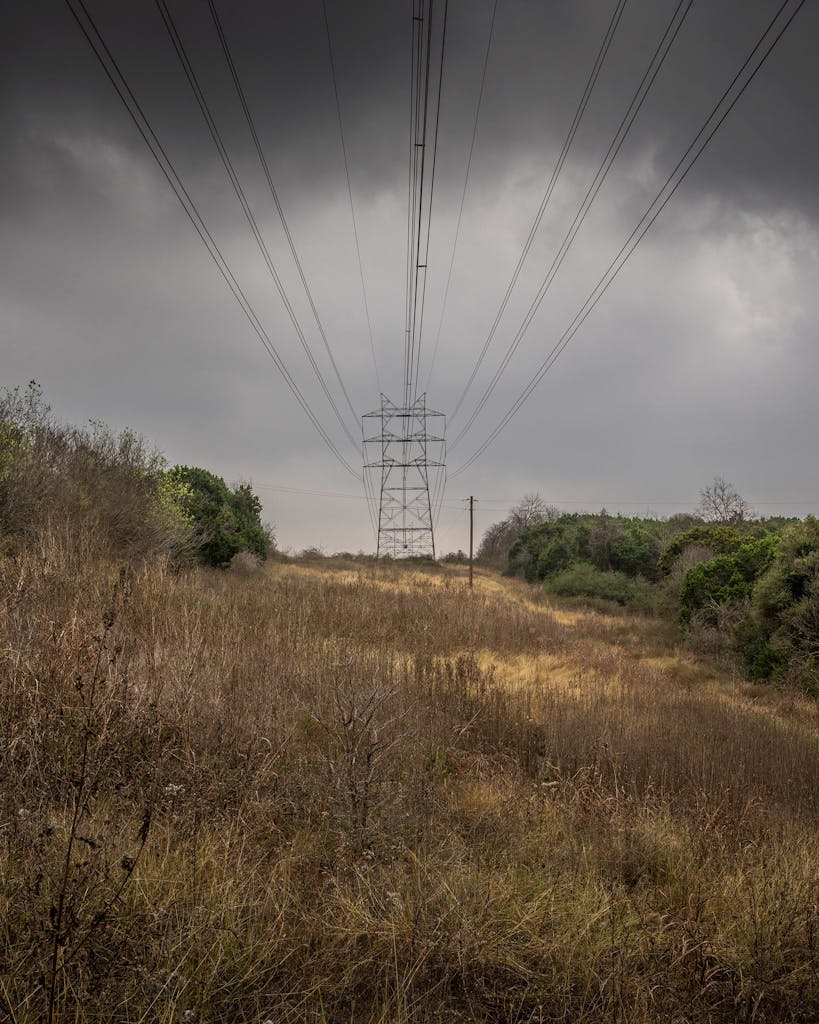
This is particularly shameful to hear for anyone versed in Texas’s history as an energy leader.
Though it may be hard to believe today, Texas’s grid became a pioneer in the world of electricity generation and distribution two decades ago. Under Governor Perry, Texas spent $6.9 billion on an ambitious program to build 3,600 miles of new high-voltage transmission lines. One set of lines stretched from Dallas to the Panhandle, forming a looping figure that came to be known colloquially as “the horsehead.” Other lines began in Central Texas and headed west, reaching toward Midland and Odessa and into the windy counties where the Chihuahuan Desert meets the Great Plains. In other states, the construction of comparable transmission lines often gets delayed for years, mired in bureaucratic morasses and landowner lawsuits. Texas completed its entire network in a relatively brisk nine years.
These lines were a boon to renewable energy developers, connecting the large population centers along Interstate 35 (and east to Houston) to western parts of the state, where land is cheap, landowners are welcoming, and wind and sun are plentiful. In 2020 Texas generated more renewable electricity than any other state by far. California was a distant second. By all accounts, Texas, long famed for being a global powerhouse in oil and gas, had cemented its leadership in the next generation of energy.
And then came the February blackouts. Our folly was laid bare: it’s as if we’d built a powerful, expensive car and then tried to pinch pennies by not buying antifreeze for it.
Despite this embarrassment, Texas still enjoys unmatched expertise in energy engineering, financing, and manufacturing. Some of the technology and gear developed to frack oil and gas is now being repurposed to tap renewable energy. Shipyards that once made vessels to install offshore oil rigs are now adapting for offshore wind turbines. Taking advantage of these resources would create tens of thousands of good jobs, including for workers displaced as oil and gas exploration inevitably declines.
Low-carbon grids are the future, and Texas has a multiyear head start. But before this opportunity can be grasped, the state needs political leaders and regulators who are focused on the jobs and well-being of average Texans rather than on the narrower incumbent interests of owners and executives of fossil fuel companies.
This article originally appeared in the December 2021 issue of Texas Monthly with the headline “It Could Happen Again.” Subscribe today.
"electric" - Google News
January 18, 2022 at 09:03PM
https://ift.tt/3KoARur
The Texas Electric Grid Failure Was a Warm-up - Texas Monthly
"electric" - Google News
https://ift.tt/2yk35WT
https://ift.tt/2YsSbsy
Bagikan Berita Ini
















0 Response to "The Texas Electric Grid Failure Was a Warm-up - Texas Monthly"
Post a Comment